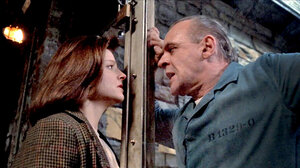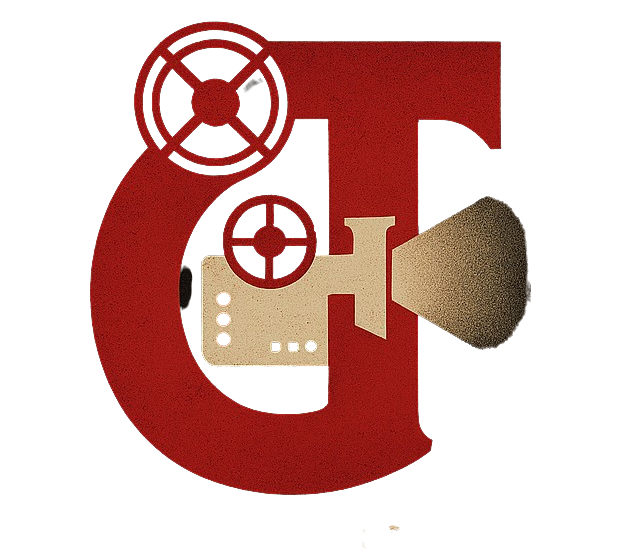The Silence of the Lambs

With a then-unprecedented budget of over $100 million and cutting-edge visual effects courtesy of Industrial Light & Magic, few films captured the magnitude of their moment more vividly than Terminator 2: Judgment Day. James Cameron’s sequel to his 1984 sleeper hit elevated transformed CGI from novelty into necessity, its liquid-metal assassin T-1000, portrayed with eerie precision by Robert Patrick, emerging as the face of a new digital frontier. Ultimately, it redefined the scale and ambition of what a summer action film could be, demonstrating how realism could now be rendered pixel by pixel, even as it reshaped its own mythology.
At its core lies a melancholic inversion: Arnold Schwarzenegger’s once-apocalyptic villain returns a protector, programmed to safeguard rather than destroy; Linda Hamilton’s Sarah Connor, no longer a victim, emerges a hardened prophet of doom. Haunted by a future that no one else can see, her central anxiety – whether humanity can change its own fate – mirrored the broader cultural unease at the close of the Cold War. Cameron delivers his vision with forceful clarity: apocalypse remains preventable, though salvation is never guaranteed. In so doing, he adds the third essential sci-fi milestone, and second defining sequel, of his young directorial career.
The year’s cinematic ambition was not just limited to spectacle. Independent filmmakers were also pushing into deeper emotional and political currents, shaping narratives marked by ambiguity, disillusionment, and the unresolved tensions of the post-Reagan landscape. Set in 1940s Hollywood, Barton Fink follows a New York playwright-turned-screenwriter frozen by writer’s block inside a hotel-from-hell. The Coen brothers fused noir, horror, and absurdism into a single fever dream, unraveling the illusion of creative purity within a commercial industry. Its Palme d’Or win at Cannes affirmed the Coens as chroniclers of societal decay armed with a surrealist edge rather than mere genre stylists.
In Thelma and Louise, director Ridley Scott and screenwriter Callie Khouri reinvented the road movie – long dominated by masculine alienation – as a portrait of escape, rebellion, and autonomy. Susan Sarandon and Geena Davis portray women on the run, rebuilding their identities across a sun-bleached American Southwest that feels both endless and suffocating. The film’s climactic gesture – an open-air defiance of capture, gravity, and patriarchy – reads as reclamation and control rather than tragedy. Though often reduced to a catchphrase or freeze-frame, its legacy continues to echo through ongoing contemporary discussions around gender, resistance, and representation.
Oliver Stone’s JFK, in contrast, was a descent into paranoia. Spanning more than three hours and assembled from a kaleidoscope of archival footage, dramatized re-enactments, and impassioned monologues, the film functioned less as an investigation than as a cinematic indictment. District Attorney Jim Garrison (Kevin Costner) pursues the truth with relentless conviction, his obsession directed at the disintegration of institutional credibility. Stone’s blistering montage and unwavering point of view polarized both critics and historians. Yet JFK revealed something urgent: a desperate cultural hunger for truth in a time increasing defined by doubt and suspicion. It functioned as historical drama channeling prophetic energy.
Still, no film from 1991 reached deeper into the national psyche than The Silence of the Lambs. Directed by Jonathan Demme and adapted from Thomas Harris’ novel, the film straddled the line between crime thriller and psychological horror. At its center stands Clarice Starling (Jodie Foster), an FBI trainee tasked with securing the insight of the imprisoned Dr. Hannibal Lecter (Anthony Hopkins), a brilliant psychiatrist and cannibal, in pursuit of a serial killer known as Buffalo Bill. Though the plot appears deceptively procedural, the film quickly evolves into a psychological chess match of shifting power dynamics between its two leads.
Clarice’s interviews with Lecter, held in the shadowy depths of a prison both literal and symbolic, unfold as a study in mutual acts of exposure: her traumas unearthed beneath Lecter’s scrutiny, his menace disguised by charm. Demme’s use of tight, subjective camerawork aligns the viewer with Clarice’s perspective, lending the film an uneasy intimacy and implicating the audience in her fear. At its essence, The Silence of the Lambsinterrogates what it means to look, and to be looked at. As a women navigating the male-dominated terrain of law enforcement, Clarice endures a constant, unrelenting gaze – measured, dismissive, and invasive.
Her journey becomes not just an investigation but a test of resilience – of intellect, will, and identity. Lecter, unlike his counterparts, offers neither dismissal nor condensation. He identifies her ambition and probes its source. The film’s central idea – that trauma can only be confronted, not outrun – crystalizes in Clarice’s childhood memory of lambs crying before slaughter, a metaphor as lyrical as it is haunting. During her climactic encounter with Buffalo Bill, filmed in spectral night vision, she faces terror alone – no allies, no saviors – emerging not as a conqueror of evil, but as a survivor shaped by it.
Critics hailed the film upon its release. It swept all five major Academy Awards and reset expectations for the serial killer genre. Today, it remains a masterwork of tone and performance. Hopkins’s Lecter, with just over fifteen minutes of screen time, remains one of cinema’s most indelible antagonists. Foster’s Clarice, restrained yet unflinching, introduced a new kind of heroism, rooted in insight and compassion rather than dominance. For a generation accustomed to adrenaline-fueled horror hybrids, The Silence of the Lambs revealed that fear could be internalized, and that true terror often arrives cloaked in the guise of quiet, polite civility.
And as a footnote, Death Becomes Her, released the following summer, marked a sharp turn for director Robert Zemeckis. Trading sentimentality for caustic farce, he delivered a barbed satire on the perils of vanity, aging, and immortality. Meryl Streep and Goldie Hawn star as lifelong rivals who discover an elixir granting eternal youth, only to realize that endless life yields its own macabre consequences. Despite pioneering visual effects and a bold camp sensibility, the film underwhelmed at the box office and divided critics. Over time, however, it has gained cult esteem as a darkly comic reflection on beauty’s diminishing returns.

